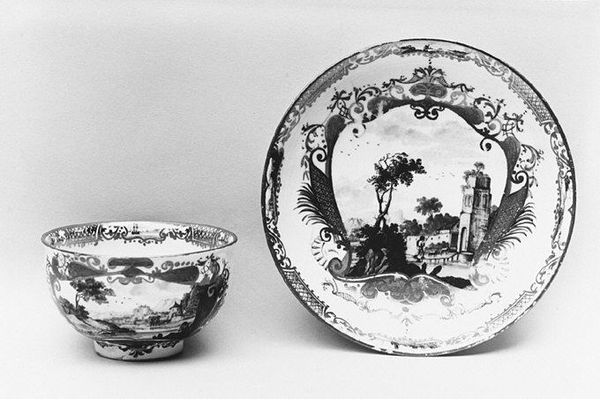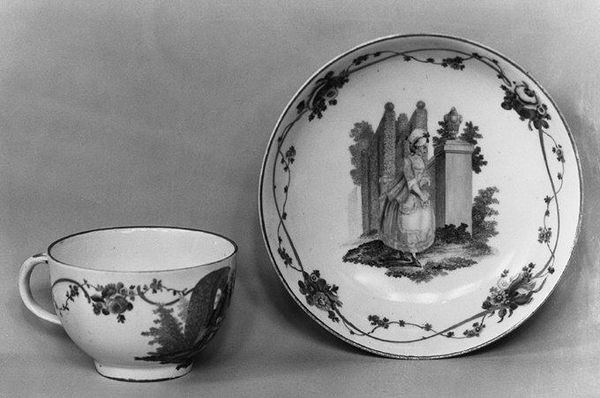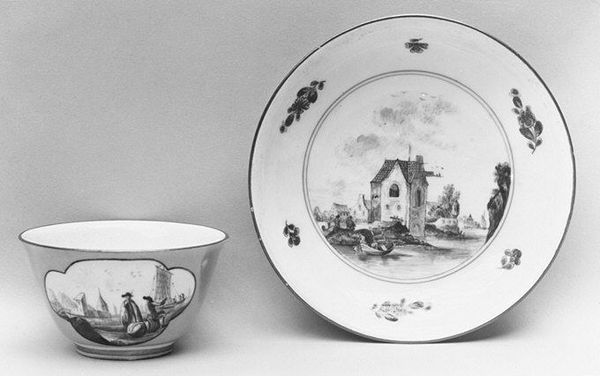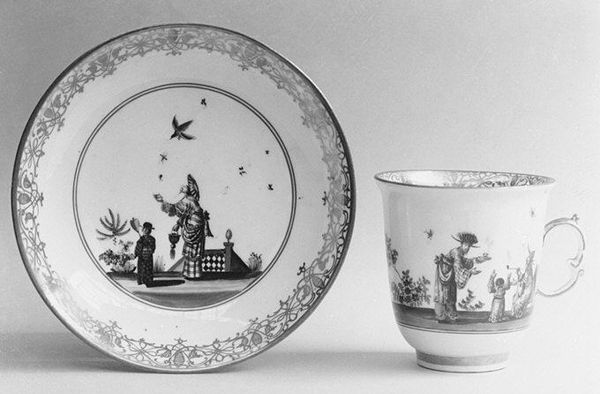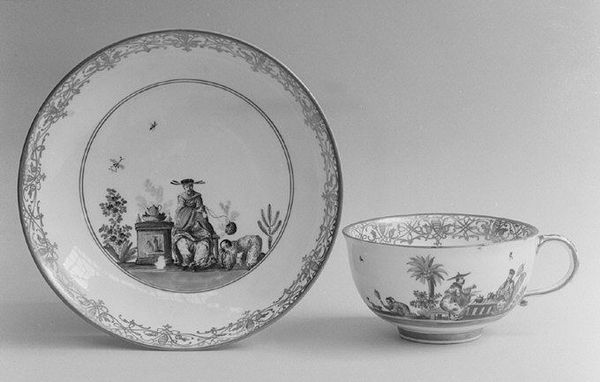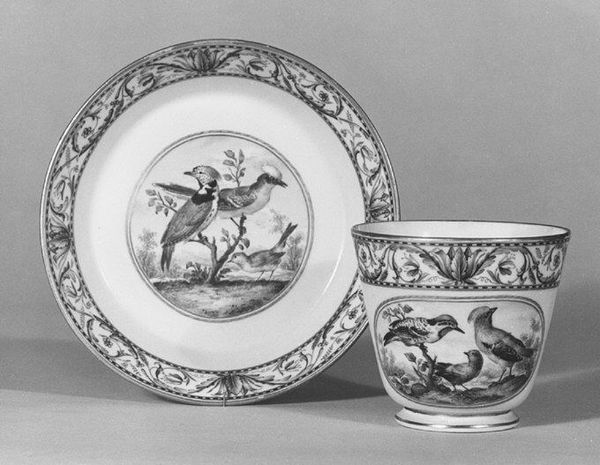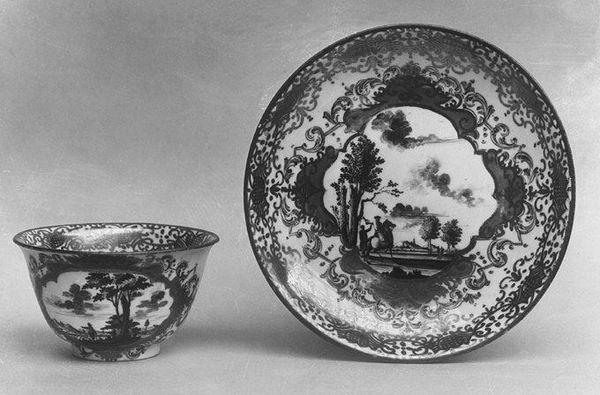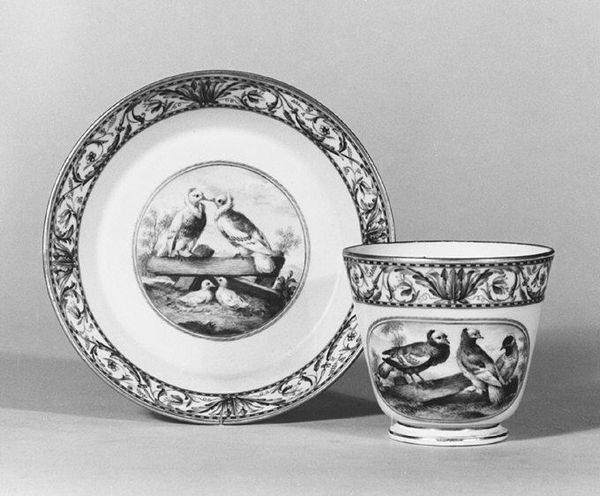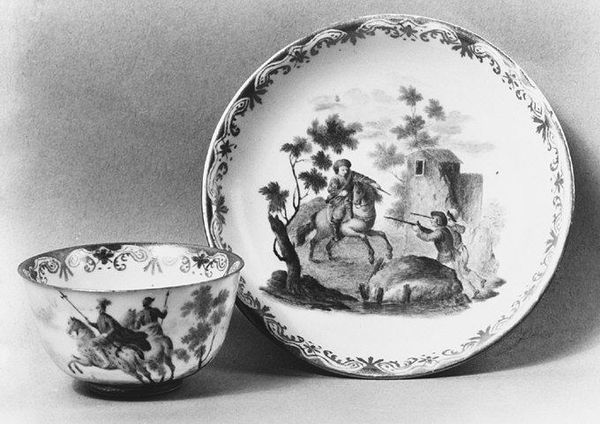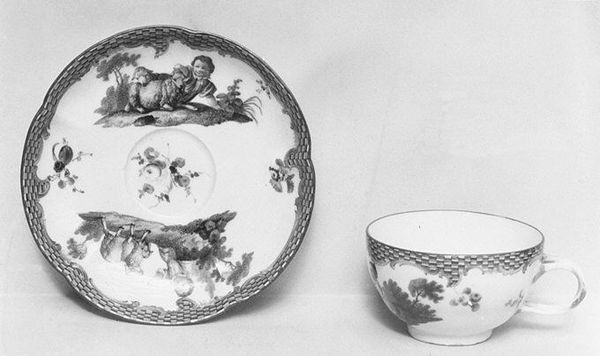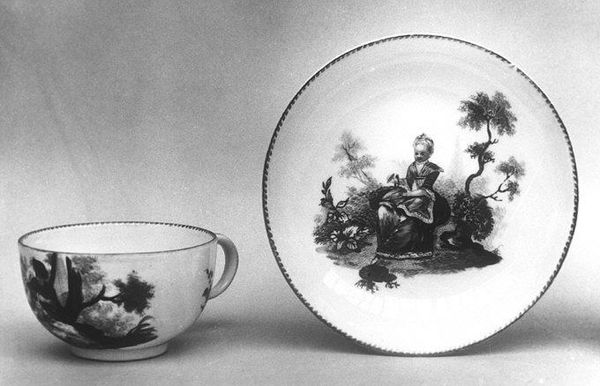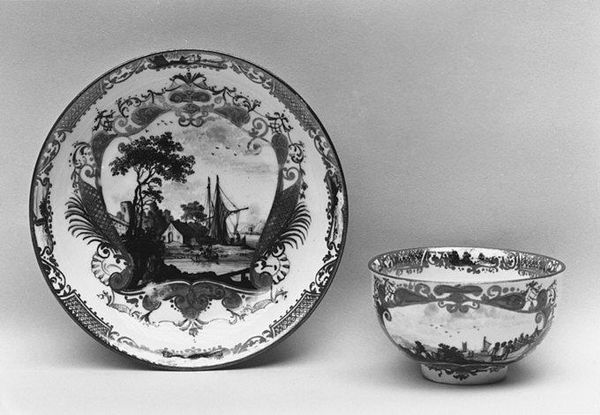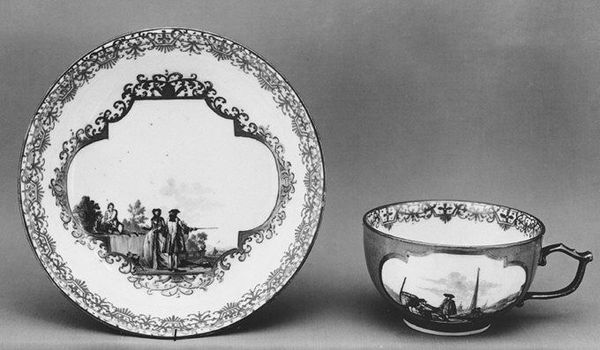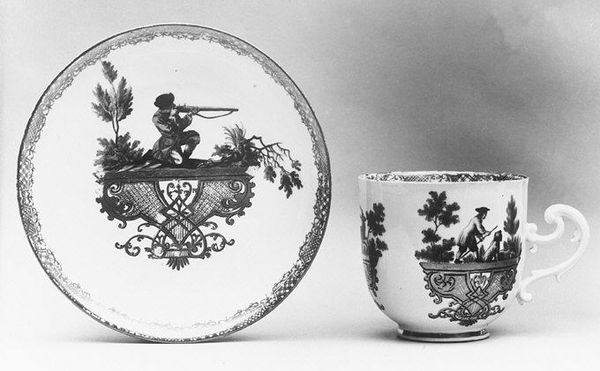
ceramic, porcelain, sculpture
#
ceramic
#
porcelain
#
figuration
#
sculpture
#
genre-painting
#
decorative-art
#
miniature
#
rococo
Dimensions: Height (cup .167): 2 3/4 in. (7 cm); Diameter (saucer .168): 5 in. (12.7 cm)
Copyright: Public Domain
Curator: Here we have a beautiful example of Meissen porcelain, a cup and saucer dating back to around 1735-1745. Editor: My first impression is of meticulous detail—those tiny scenes of conflict hand-painted onto delicate porcelain; it seems to reflect the power of luxury. Curator: Exactly. Meissen was the first to master the process of creating true porcelain outside of China, it quickly became a symbol of status, directly linked to wealth. These pieces would have been crafted and consumed in a very specific social milieu. Editor: Absolutely. Look at these scenes – soldiers, horses, moments of apparent victory depicted as aristocratic status symbols. Who was laboring to create these idyllic tableaus, and who was profiting? And how does this aesthetic ideal compare with, or contrast with, the grim reality of warfare or the material conditions of workers at that time? Curator: Indeed. It highlights the disparities in consumption patterns within the European aristocracy of that era. The ceramic material itself has intrinsic value, representing a very high degree of skilled making and intensive firing methods. Note, for example, the forms of the cup's handle or the saucer edge, shaped through casting techniques. Editor: It also represents an intersection between artistry and manufacturing, almost a precursor to modern-day commodification of luxury. How was this porcelain made? What sort of physical risks might workers be exposed to, given the high temperatures needed to produce it? Who mined and processed the materials to make these objects possible? Curator: Considering these kinds of material concerns is crucial, even when faced with something like a decorative artwork from the 18th century. The raw materials had to be acquired, transported and processed using contemporary production technology to attain the end result. Editor: Engaging with such items reminds us that there's always a connection—often a fraught one—between the beauty we consume and the hidden conditions of its creation. It asks us to consider the labor behind the art and the societal hierarchies it may subtly reinforce. Curator: It’s true, analyzing historical creations like these forces us to grapple with some very fundamental inequalities, even across great temporal distances. Editor: A beautiful, if slightly disquieting, thing to remember next time I pour my tea!
Comments
No comments
Be the first to comment and join the conversation on the ultimate creative platform.
